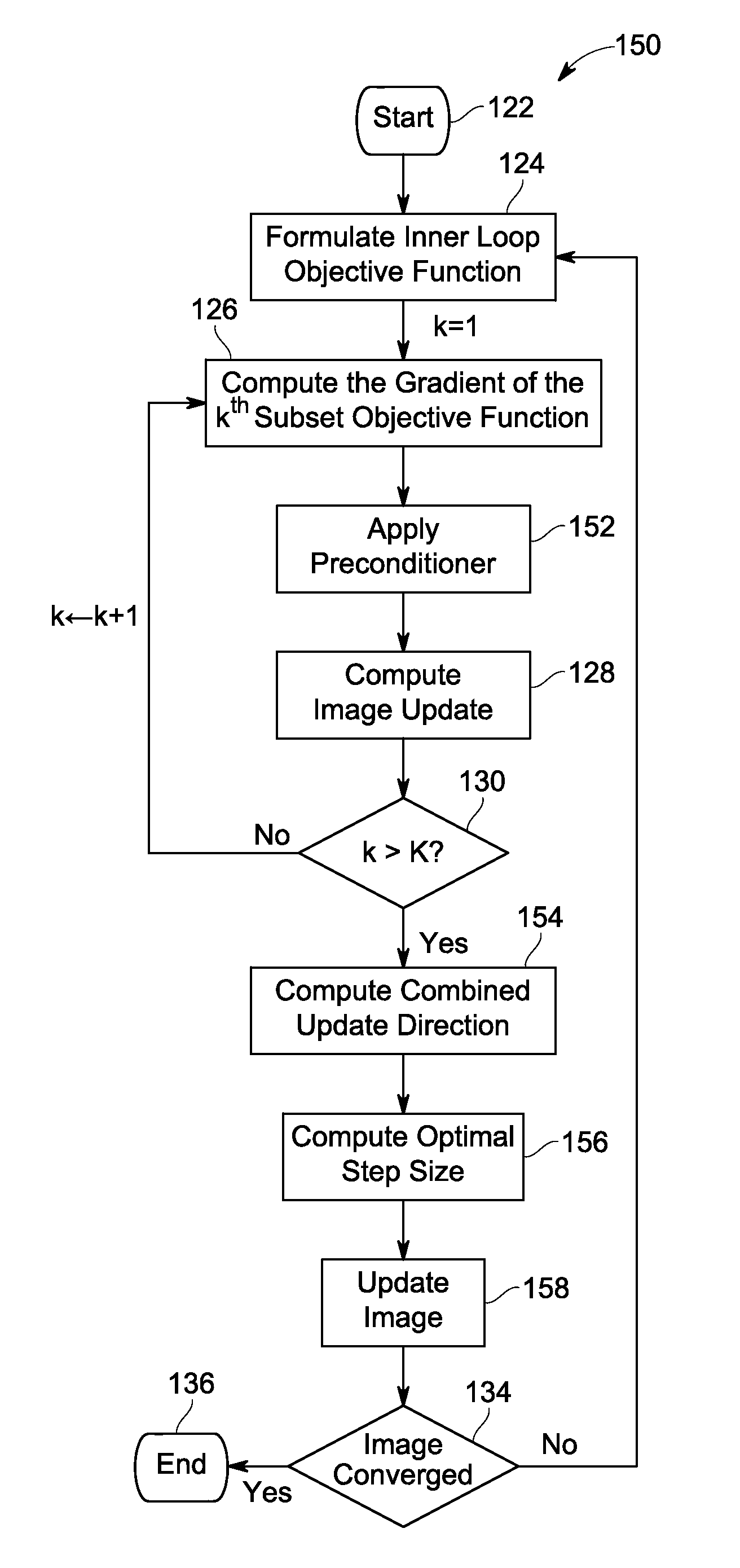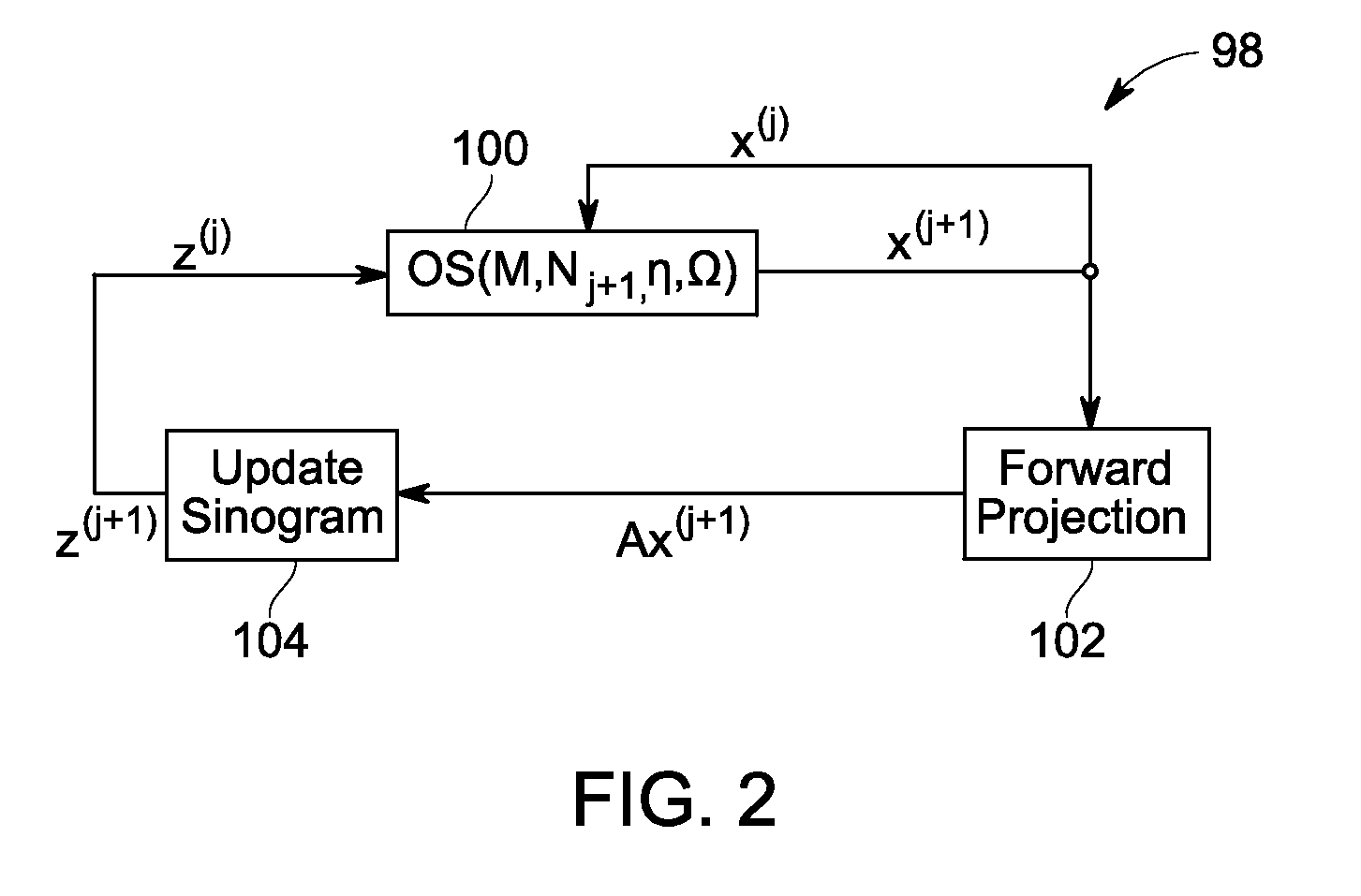Accelerated iterative reconstruction
a technology of iterative reconstruction and computed tomography, applied in the field of imaging, can solve the problems of time-consuming and general computational intensity of iterative reconstruction techniques
- Summary
- Abstract
- Description
- Claims
- Application Information
AI Technical Summary
Benefits of technology
Problems solved by technology
Method used
Image
Examples
Embodiment Construction
[0022]Model-based iterative reconstruction (MBIR) approaches improve various aspects of image quality and have demonstrated potential dose savings. However, these approaches also are associated with long computation time and are computationally intensive, which can preclude adoption of such approaches in clinical environments. The high computation cost of model-based iterative reconstruction (MBIR) is a result of the complexity of various geometrical, physical, and statistical models being employed by MBIR and of the large size of data acquired by conventional multi-slice CT scanners. In particular, MBIR algorithms typically work by first forming an objective function that incorporates an accurate system model, statistical noise model, and prior model. The image is then reconstructed by computing an estimate that minimizes the resulting objective function.
[0023]Many types of algorithms can be used for minimizing the objective, or cost, function employed with such MBIR approaches. Se...
PUM
 Login to View More
Login to View More Abstract
Description
Claims
Application Information
 Login to View More
Login to View More - R&D
- Intellectual Property
- Life Sciences
- Materials
- Tech Scout
- Unparalleled Data Quality
- Higher Quality Content
- 60% Fewer Hallucinations
Browse by: Latest US Patents, China's latest patents, Technical Efficacy Thesaurus, Application Domain, Technology Topic, Popular Technical Reports.
© 2025 PatSnap. All rights reserved.Legal|Privacy policy|Modern Slavery Act Transparency Statement|Sitemap|About US| Contact US: help@patsnap.com



